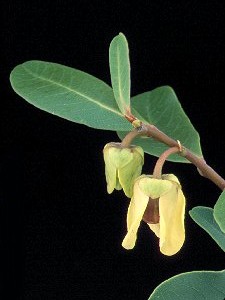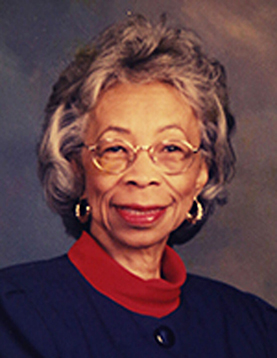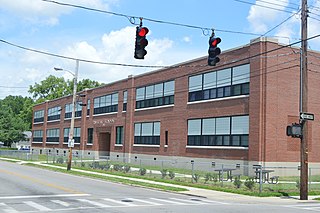
Asimina is a genus of small trees or shrubs described as a genus in 1763. Asimina is the only temperate genus in the tropical and subtropical flowering plant family Annonaceae. Asimina have large, simple leaves and large fruit. It is native to eastern North America and collectively referred to as pawpaw. The genus includes the widespread common pawpaw Asimina triloba, which bears the largest edible fruit indigenous to the United States. Pawpaws are native to 26 states of the U.S. and to Ontario in Canada. The common pawpaw is a patch-forming (clonal) understory tree found in well-drained, deep, fertile bottomland and hilly upland habitat. Pawpaws are in the same plant family (Annonaceae) as the custard apple, cherimoya, sweetsop, soursop, and ylang-ylang; the genus is the only member of that family not confined to the tropics.

Frankfort is the capital city of the U.S. state of Kentucky and the seat of Franklin County. It is a home rule-class city. The population was 28,602 at the 2020 United States census. Located along the Kentucky River, Frankfort is the principal city of the Frankfort, Kentucky Micropolitan Statistical Area, which includes all of Franklin and Anderson counties. It is the 4th least populous state capital in the United States, and the 13th most populous city in Kentucky.

The University of Kentucky is a public land-grant research university in Lexington, Kentucky. Founded in 1865 by John Bryan Bowman as the Agricultural and Mechanical College of Kentucky, the university is one of the state's two land-grant universities. It is the institution with the highest enrollment in the state, with 32,710 students as of fall 2022.

Eurytides marcellus, the zebra swallowtail, is a swallowtail butterfly native to the eastern United States and south-eastern Canada. It is the state butterfly of Tennessee. Its distinctive wing shape and long tails make it easy to identify, and its black-and-white-striped pattern is reminiscent of a zebra. The butterflies are closely associated with pawpaws, and are rarely found far from these trees. The green or black caterpillars feed on the leaves of various pawpaw species, while the adults feed on flower nectar and minerals from damp soil.
The Kentucky Community and Technical College System (KCTCS) is the system of public community and technical colleges in the U.S. state of Kentucky. It is headquartered in Versailles, Kentucky, and has 16 colleges with over 70 campuses. Programs offered include associate degrees; pre-baccalaureate education to transfer to a public 4-year institution; adult education, continuing and developmental education; customized training for business and industry; and distance learning. KCTCS was founded as part of the Postsecondary Improvement Act of 1997, signed by former Kentucky Governor Paul E. Patton, to create a new institution to replace the University of Kentucky's Community College System and the Kentucky Department of Education's network of technical schools. The Kentucky Fire Commission, a separate state entity responsible for training emergency responders, also became part of KCTCS at that time.

Asimina triloba, the American papaw, pawpaw, paw paw, or paw-paw, among many regional names, is a small deciduous tree native to the eastern United States and Canada, producing a large, yellowish-green to brown fruit. Asimina is the only temperate genus in the tropical and subtropical flowering plant family Annonaceae, and Asimina triloba has the most northern range of all. Well-known tropical fruits of different genera in family Annonaceae include the custard-apple, cherimoya, sweetsop, ylang-ylang, and soursop.
Simmons College of Kentucky is a private historically black college in Louisville, Kentucky. Founded in 1879, it is the nation's 107th HBCU and is accredited by the Association for Biblical Higher Education.

Asimina tetramera, commonly known as the four-petal pawpaw, is a rare species of small tree or perennial shrub endemic to Martin and Palm Beach Counties in the state of Florida. The species is currently listed as endangered under the Endangered Species Act and as endangered by the International Union for Conservation. The four-petal pawpaw is part of the Annonaceae family alongside other Asimina species.

Paul Garrett Blazer was president and CEO of Ashland Oil and Refining Company located in Ashland, Kentucky.
Anna Mac Clarke was a Women's Army Corps officer during World War II. She became the first African American woman to be a commanding officer of an otherwise all-white regiment. She became a first lieutenant.

The Kentucky State Thorobreds and Thorobrettes are the intercollegiate athletic teams that represent Kentucky State University, located in Frankfort, Kentucky, in intercollegiate sports at the Division II level of the National Collegiate Athletic Association (NCAA). The Thorobreds and Thorobrettes are members of the Southern Intercollegiate Athletic Conference (SIAC), which they have competed since the 1997–98 academic year. Kentucky State previously competed in the Great Lakes Valley Conference (GLVC) from 1989–90 to 1993–94.
The Day Law mandated racial segregation in educational institutions in Kentucky. Formally designated "An Act to Prohibit White and Colored Persons from Attending the Same School," the bill was introduced in the Kentucky House of Representatives by Carl Day in January 1904, and signed into law by Governor J.C.W. Beckham in March 1904. As well as prohibiting students of color from attending the same school as white students, the law prohibited individual schools from operating separate black and white branches within 25 miles of each other.
Carl McClellan Hill was an American educator and academic administrator who served as president of Kentucky State University from 1962 to 1975, and as the 11th president of Hampton University from 1976 to 1978.
E. Belle Mitchell Jackson was an American educator, activist, small business owner, and abolitionist from Danville, Kentucky. Mitchell was one of the founders of the Colored Orphans Industrial Home in Lexington, Kentucky.
Rufus Ballad Atwood (1897—1983) was an American educator, academic administrator, and university president. He was the sixth and longest-serving president of Kentucky State University in Frankfort, Kentucky.

Mary Levi Smith was an American educator who served as the 11th president of Kentucky State University (KSU) from 1991 to 1998. She was the first female president of KSU and the second woman to lead a state university in Kentucky.
Black Kentuckians are residents of the state of Kentucky who are of African ancestry. The history of Blacks in the US state of Kentucky starts at the same time as the history of White Americans; Black Americans settled Kentucky alongside white explorers such as Daniel Boone. As of 2019, according to the U.S. Census Bureau, African Americans make up 8.5% of Kentucky's population. Compared to the rest of the population, the African American census racial category is the 2nd largest.
The 1946 Kentucky State Thorobreds football team was an American football team that represented Kentucky State Industrial College as a member of the Midwest Athletic Association (MAA) during the 1946 college football season. Led by Robert White in his first and only season as head coach, the Thorobreds compiled a 5–4 record and outscored opponents by a total of 111 to 77.

The Russell School (1895–2003) is a former public school located in the Northside neighborhood of Lexington, Kentucky. From 1895 until roughly the mid-1960s, the school was segregated and served African American students.

Green Pinckney Russell (1861/1863–1939), was an American teacher, principal, school district supervisor, and college president. He was the first licensed African American teacher in Lexington, Kentucky. Russell was the first "Supervisor of Negro Schools" in Lexington, and he served two-terms as president of Kentucky State Industrial College for Colored Persons.














